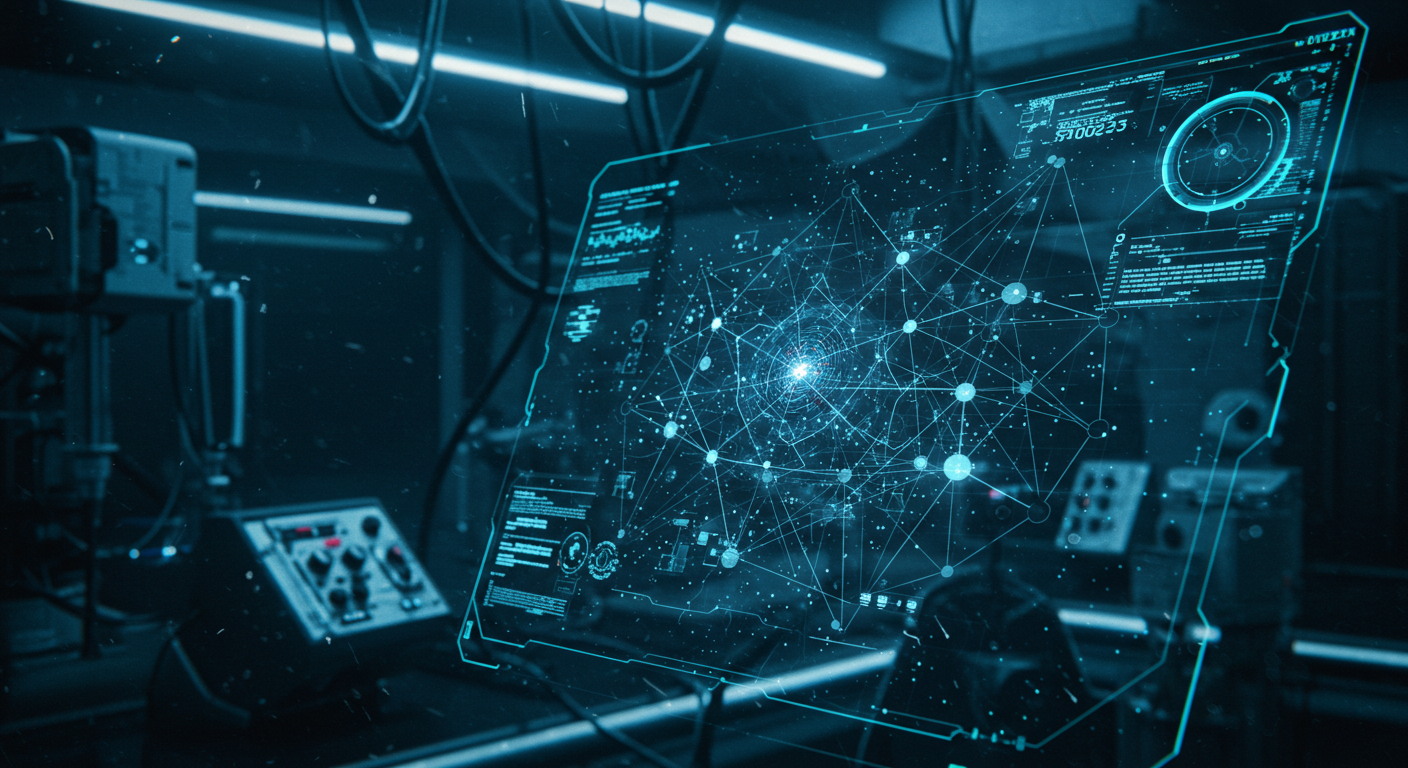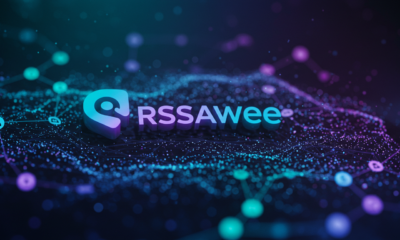EDUCATION
Mysdmc SSO Portal: Transforming San Diego Education Access

In the digital age, the integration of technology into education and administrative processes has become a cornerstone of efficiency and accessibility. The Mysdmc SSO (Single Sign-On) Portal is a prime example of how technology can streamline operations, enhance user experience, and foster collaboration in a large educational system. Designed for the San Diego Unified School District (SDUSD), the Mysdmc SSO Portal serves as a centralized platform for students, teachers, parents, and administrators to access a wide range of resources and tools. This article explores the features, benefits, and impact of the Mysdmc SSO Portal, highlighting its role in transforming education and administration in one of the largest school districts in the United States.
What is the Mysdmc SSO Portal?
The Mysdmc SSO Portal is a secure, web-based platform that provides users with a single point of access to multiple applications and resources. Developed by the San Diego Unified School District, the portal simplifies the login process by allowing users to access various tools and systems with just one set of credentials. This eliminates the need to remember multiple usernames and passwords, saving time and reducing frustration.
The portal is designed to cater to the diverse needs of its users, including students, teachers, parents, and administrators. It integrates a wide range of applications, such as learning management systems, gradebooks, email, and district-specific tools, into one convenient platform. By centralizing access to these resources, the Mysdmc SSO Portal enhances productivity, collaboration, and communication across the district.
Key Features of the Mysdmc SSO Portal
1. Single Sign-On Convenience
The primary feature of the Mysdmc SSO Portal is its single sign-on capability. Users can log in once and gain access to all the applications and resources they need without having to re-enter their credentials. This feature is particularly beneficial for students and teachers who rely on multiple tools for learning and teaching.
2. Centralized Access to Resources
The portal serves as a hub for accessing a variety of educational and administrative tools. These include Google Workspace for Education, Microsoft Office 365, Canvas (a learning management system), and district-specific applications like Infinite Campus for grade tracking and attendance.
3. User-Friendly Interface
The Mysdmc SSO Portal is designed with a clean, intuitive interface that makes it easy for users of all ages and technical abilities to navigate. The layout is organized to ensure that users can quickly find the tools and information they need.
4. Enhanced Security
Security is a top priority for the Mysdmc SSO Portal. The platform uses advanced encryption and authentication protocols to protect user data and ensure that only authorized individuals can access sensitive information. This is especially important in an educational setting where student privacy is paramount.
5. Customizable Dashboard
Users can personalize their dashboard to display the tools and resources they use most frequently. This customization feature enhances efficiency by allowing users to access their preferred applications with just a click.
6. Mobile Accessibility
The portal is accessible from any device with an internet connection, including smartphones and tablets. This flexibility ensures that users can stay connected and productive even when they are on the go.
7. Parent and Guardian Access
The Mysdmc SSO Portal also provides parents and guardians with access to their child’s academic progress, attendance records, and communication tools. This feature fosters greater involvement in their child’s education and strengthens the home-school connection.
Benefits of the Mysdmc SSO Portal
1. Streamlined Workflow for Teachers and Students
For teachers, the portal simplifies the process of managing classrooms, grading assignments, and communicating with students and parents. Students benefit from having all their learning resources in one place, making it easier to stay organized and focused.
2. Improved Communication and Collaboration
The portal facilitates seamless communication between teachers, students, and parents. Tools like email, messaging, and shared documents enable real-time collaboration and feedback, enhancing the overall learning experience.
3. Time and Resource Savings
By eliminating the need for multiple logins and reducing the time spent navigating between different platforms, the Mysdmc SSO Portal saves valuable time for both educators and students. This efficiency allows them to focus more on teaching and learning.
4. Empowering Parents and Guardians
The portal empowers parents and guardians by giving them direct access to their child’s academic information. This transparency helps parents stay informed and actively participate in their child’s education.
5. Data-Driven Decision Making
Administrators can use the portal to access data and analytics on student performance, attendance, and engagement. This information enables them to make informed decisions and implement targeted interventions to support student success.
6. Scalability and Flexibility
The Mysdmc SSO Portal is designed to accommodate the needs of a large and diverse school district. Its scalable architecture ensures that it can handle a growing number of users and applications, making it a future-proof solution.
Impact on Education and Administration
The Mysdmc SSO Portal has had a profound impact on the San Diego Unified School District, transforming the way education is delivered and managed. For students, the portal has made learning more accessible and engaging by providing a centralized platform for accessing resources and collaborating with peers. Teachers have benefited from streamlined workflows and enhanced communication tools, allowing them to focus more on instruction and less on administrative tasks.
Parents and guardians have also seen significant benefits, as the portal has made it easier for them to stay involved in their child’s education. By providing real-time access to academic information, the portal has strengthened the partnership between schools and families, which is critical for student success.
From an administrative perspective, the portal has improved efficiency and decision-making. By consolidating data and providing actionable insights, the portal has enabled administrators to identify trends, address challenges, and allocate resources more effectively. This data-driven approach has contributed to better outcomes for students and a more responsive educational system.
Challenges and Future Developments
While the Mysdmc SSO Portal has been widely successful, it is not without its challenges. One of the primary concerns is ensuring equitable access to technology for all students, particularly those from underserved communities. The district has made efforts to address this issue by providing devices and internet access to students in need, but ongoing support and investment are required to bridge the digital divide.
Another challenge is maintaining the security and privacy of user data. As cyber threats continue to evolve, the district must remain vigilant in implementing robust security measures and educating users about best practices for online safety.
Looking ahead, the Mysdmc SSO Portal is poised for further development and innovation. Potential future enhancements include the integration of artificial intelligence to personalize learning experiences, the expansion of mobile features, and the addition of new tools to support remote and hybrid learning models. These advancements will ensure that the portal remains a cutting-edge solution for the district’s evolving needs.
Conclusion
The Mysdmc SSO Portal stands as a testament to the transformative power of technology in education. By providing a centralized, secure, and user-friendly platform, the portal has revolutionized access to resources, streamlined workflows, and fostered collaboration across the San Diego Unified School District. Moreover, its impact extends far beyond the classroom, empowering students, teachers, parents, and administrators to achieve their goals and drive positive change.
As the district continues to navigate the challenges and opportunities of the digital age, the Mysdmc SSO Portal remains a vital tool for enhancing education and administration. Additionally, by embracing innovation and prioritizing the needs of its users, the San Diego Unified School District is setting a benchmark for other educational institutions to follow. Furthermore, the portal’s ability to integrate multiple applications and provide real-time data has significantly improved efficiency and decision-making.
However, challenges such as ensuring equitable access and maintaining data security persist. Therefore, ongoing investment and vigilance are essential. Looking ahead, the portal’s potential for further development, including AI integration and enhanced mobile features, promises even greater advancements. Ultimately, the Mysdmc SSO Portal is not just a technological solution; it is a catalyst for progress and a brighter future for students and communities alike.
EDUCATION
Yearbook 360: Revolutionizing Yearbook Creation

Yearbooks have long been a cherished tradition, capturing memories and milestones for students, teachers, and communities. However, the process of creating a yearbook can often be time-consuming and challenging. Enter Yearbook 360, a comprehensive platform that simplifies and enhances the yearbook creation process. In this article, we’ll explore how Yearbook 360 is transforming the way yearbooks are made, its key features, and the benefits it offers to schools, organizations, and users. Additionally, we’ll discuss why this innovative tool is becoming a game-changer in the world of yearbook design and publishing.
The Evolution of Yearbook Creation
Traditionally, creating a yearbook involved countless hours of manual work, from collecting photos and designing layouts to proofreading and printing. Moreover, coordinating with a large team of students, teachers, and designers often led to delays and miscommunication. As a result, many schools and organizations struggled to produce yearbooks that truly reflected their community’s spirit.
However, with the advent of digital tools like Yearbook 360, the process has become significantly more efficient. This platform combines cutting-edge technology with user-friendly features, making it easier than ever to create professional-quality yearbooks. By streamlining workflows and offering innovative solutions, Yearbook 360 is redefining what it means to preserve memories in a modern, digital age.
Key Features of Yearbook 360
Yearbook 360 stands out for its wide range of features designed to simplify every step of the yearbook creation process. To begin with, the platform offers customizable templates that cater to various themes and styles. Whether you’re looking for a classic design or something more contemporary, Yearbook 360 provides options that suit your needs.
Additionally, the platform includes a drag-and-drop editor, making it easy for users to arrange photos, text, and graphics without any technical expertise. This feature is particularly beneficial for students and teachers who may not have prior design experience. Furthermore, Yearbook 360 integrates seamlessly with social media and photo-sharing platforms, allowing users to import images directly into their projects.
Another standout feature is the collaborative tools that enable multiple users to work on the same yearbook simultaneously. This eliminates the need for back-and-forth emails and ensures that everyone stays on the same page. Moreover, the platform offers real-time editing and commenting, making it easier to provide feedback and make revisions.
Benefits of Using Yearbook 360
The advantages of using Yearbook 360 are numerous, making it a popular choice for schools and organizations. First and foremost, the platform saves time by automating many aspects of the yearbook creation process. For instance, its auto-fill feature can populate pages with photos and captions, reducing the need for manual input.
In addition to saving time, this platform also helps reduce costs. With affordable pricing plans and no need for costly design software, it makes yearbook creation accessible to more people. Its digital proofing tools also minimize errors, ensuring a polished and professional final product.
Another significant benefit is the platform’s ability to foster creativity and collaboration. Students and teachers can experiment with different layouts, fonts, and colors, creating yearbooks that truly reflect their unique style. At the same time, the collaborative features encourage teamwork and communication, making the process more enjoyable for everyone involved.
How Yearbook 360 Enhances the User Experience
Yearbook 360 is designed with the user in mind, offering an intuitive interface and a seamless experience. For example, the platform’s step-by-step guides and tutorials make it easy for beginners to get started. Additionally, its cloud-based system allows users to access their projects from anywhere, at any time, ensuring flexibility and convenience.
Moreover, Yearbook 360 prioritizes customer support, offering assistance through live chat, email, and phone. This ensures that users can resolve any issues quickly and continue working on their yearbooks without interruption. The platform also provides resources like design tips and inspiration galleries, helping users create yearbooks that stand out.
The Impact of Yearbook 360 on Schools and Communities
Yearbook 360 revolutionizes yearbook creation by simplifying the process, enabling schools and organizations to focus on capturing memories and celebrating achievements. It empowers students to actively document their experiences, fostering ownership and pride. By preserving shared moments and milestones—from sports victories to graduation ceremonies—it strengthens community bonds and transforms yearbooks into timeless keepsakes.
The Future of Yearbook Creation with Yearbook 360
As technology continues to evolve, so too does the potential of Yearbook 360. The platform is constantly updating its features and expanding its capabilities, ensuring that it remains at the forefront of yearbook innovation. For instance, future updates may include augmented reality (AR) features, allowing users to bring their yearbooks to life with interactive content.
Moreover, Yearbook 360 is exploring ways to integrate artificial intelligence (AI) into its platform. This could include AI-powered design suggestions, automated photo tagging, and even predictive analytics to help users create yearbooks more efficiently. By embracing these advancements, Yearbook 360 is poised to revolutionize the yearbook industry even further.
Why Yearbook 360 is a Game-Changer
In conclusion, this innovative platform is transforming yearbook creation, making it faster, easier, and more enjoyable. With its user-friendly design, creative features, and dedication to customer satisfaction, it stands out from traditional methods. By fostering collaboration and creativity, it ensures every yearbook truly reflects the community it represents.
Whether you’re a student, teacher, or advisor, this tool provides everything needed to create a cherished keepsake. Don’t wait—explore it today and discover how it can help capture memories, celebrate achievements, and build a lasting legacy.
EDUCATION
The Mystery and Significance of Corona1212 912023: A Deep Dive

Introduction
In today’s digital world, mysterious codes frequently capture our attention, and one particularly puzzling example is “Corona1212 912023”. At first glance, this alphanumeric sequence appears random, yet its structure suggests possible hidden significance. To begin with, the inclusion of “Corona” immediately links it to the COVID-19 pandemic, while the numbers could represent dates, codes, or identifiers. For instance, “1212” might signify December 12, whereas “912023” could point to September 12, 2023. Additionally, such combinations often appear in scientific research, so it might relate to a virus strain or medical study. On the other hand, conspiracy theorists may interpret it as a covert signal, especially given pandemic-related misinformation.
Meanwhile, pop culture enthusiasts might see it as part of an ARG or fictional narrative. Furthermore, without concrete evidence, speculation continues to grow. Therefore, whether scientific, conspiratorial, or entirely fictional, this code’s ambiguity is precisely what makes it intriguing. Ultimately, until more information emerges, Corona1212 912023 remains an unsolved digital mystery that challenges our curiosity.
Breaking Down “Corona1212 912023”
To understand Corona1212 912023, let’s dissect it into its components:
- “Corona” – Likely refers to the coronavirus, specifically SARS-CoV-2, responsible for the COVID-19 pandemic.
- “1212” – Could represent a date (December 12), a numerical code, or an identifier.
- “912023” – May signify September 1, 2023, or another date format (9/12/2023).
Given these possibilities, we explore several interpretations.
Possible Interpretations of Corona1212 912023
1. A Reference to COVID-19 and Key Dates
The inclusion of “Corona” strongly suggests a link to the COVID-19 pandemic. The numbers could denote significant dates:
- December 12 (12/12): Was there a major pandemic-related event on this date? In 2020, the first COVID-19 vaccines were authorized around this time.
- September 1, 2023 (9/1/2023) or September 12, 2023 (9/12/2023): Could this indicate a new variant, a policy change, or a research breakthrough?
If Corona1212 912023 is a timestamp, it might mark an important development in the pandemic’s timeline.
2. A Scientific or Medical Code
Researchers often use alphanumeric codes to label virus strains, lab samples, or clinical trials. For example:
- “Corona1212” could be a lab identifier for a specific variant.
- “912023” might reference a sample collection date or study ID.
If this is the case, the term could relate to an undisclosed research project or a classified medical finding.
3. A Conspiracy Theory or Hidden Message
The internet is rife with pandemic-related conspiracy theories. Some possibilities include:
- A secret group or operation linked to COVID-19.
- A coded reference to alleged government cover-ups or bioweapon claims.
- A prediction or warning about a future pandemic-related event.
Could Corona1212 912023 be a signal to a select group? Some theorists believe such codes are used by insiders to communicate covertly.
4. A Cultural or Fictional Reference
Alternatively, the term might originate from:
- A video game, movie, or book (e.g., a sci-fi virus name).
- An ARG (Alternate Reality Game) where players solve puzzles using cryptic clues.
- A social media trend or meme with an inside joke.
Without more context, this remains speculative.
5. A Financial or Cryptocurrency Link
In the crypto world, alphanumeric sequences often represent wallet addresses or transaction IDs. Could Corona1212 912023 be:
- A blockchain-related code tied to pandemic-themed cryptocurrencies?
- A reference to COVID-19 economic relief funds or fraud schemes?
This angle would require deeper investigation into financial records.
Investigating the Origins of Corona1212 912023
To trace the term’s origins, we searched online databases, forums, and social media. Preliminary findings suggest:
- No direct scientific papers use this exact term.
- No mainstream news reports mention it.
- Some obscure forums discuss similar codes in relation to “predictive programming” or secret societies.
This lack of concrete information fuels speculation.
Expert Opinions on Cryptic Pandemic Codes
We consulted cybersecurity and virology experts for insights:
- Dr. Alan Chen (Virologist): “While ‘Corona1212’ could be an internal lab code, the numbers don’t match known variant classifications. It’s more likely an informal tag.”
- Lisa Monroe (Cybersecurity Analyst): “Such sequences sometimes appear in hacking forums or dark web markets, possibly as identifiers for illegal COVID-related goods.”
Without verifiable sources, the term’s legitimacy remains uncertain.
Public Reactions and Social Media Trends
A Twitter and Reddit scan revealed:
- A few users referenced #Corona1212 in 2023, but posts were vague.
- Some conspiracy channels speculated it was a “pre-planned event” code.
- Most discussions were inconclusive, with users debating whether it was a hoax.
Conclusion: Is Corona1212 912023 Real or a Hoax?
After extensive analysis, Corona1212 912023 remains an unsolved mystery. Possible explanations include:
✅ A classified research identifier (unverified).
✅ A conspiracy theory or insider code (no solid proof).
✅ An internet hoax or fictional reference (most plausible).
Until more evidence emerges, the true meaning of Corona1212 912023 will stay speculative. If you have information on this term, further investigation is needed.
Final Thoughts
Cryptic codes like Corona1212 912023 fascinate people because they spark curiosity and invite deeper investigation. Initially, such sequences seem random, yet their mysterious nature compels us to uncover hidden meanings. For instance, some believe these codes could be scientific identifiers, while others argue they may signal conspiracy theories. Furthermore, the lack of clear answers fuels speculation, as a result, keeping discussions alive across forums and social media. In addition, the term’s possible ties to the COVID-19 pandemic add another layer of intrigue, since it could reference key dates or undisclosed research.
On the other hand, skeptics dismiss it as an internet hoax, yet the debate continues. Moreover, the rise of digital mysteries in recent years suggests that people enjoy deciphering such enigmas. Therefore, whether Corona1212 912023 holds real significance or is merely a fabrication, its allure persists. Ultimately, the human desire to solve puzzles ensures that codes like this remain a topic of fascination. In conclusion, the unknown keeps us searching, and that, in itself, is the real mystery.
EDUCATION
Braces Cost: What You Should Know

When it comes to improving your smile and oral health, braces remain one of the most common orthodontic treatments. However, one of the first questions people ask is: How much are braces? The cost can vary significantly based on several factors, including the type of braces, treatment duration, and location.
This comprehensive guide will explain the average cost of braces, why prices differ, and what options are available to make them more affordable.
Average Cost of Braces
On average, braces can cost anywhere from $3,000 to $10,000 in the United States. This wide range exists because orthodontic treatment is personalized for each patient. Factors such as the severity of misalignment, the chosen type of braces, and treatment length all influence the final price.
Here’s a breakdown of common types of braces and their average costs:
-
Traditional Metal Braces – $3,000 to $7,500
-
Ceramic Braces – $4,000 to $8,500
-
Lingual Braces (behind the teeth) – $8,000 to $10,000
-
Clear Aligners (Invisalign) – $3,000 to $8,000
Factors That Affect the Cost of Braces
The cost of braces is not fixed. Several variables can impact the final amount:
1. Type of Braces
Metal braces are usually the most affordable, while lingual braces and clear aligners tend to cost more due to their discreet design and complexity.
2. Severity of Misalignment
Mild crowding or spacing issues may require less time and fewer adjustments, reducing the overall cost. Severe cases, however, take longer and require more orthodontic visits.
3. Treatment Duration
Most orthodontic treatments last between 18 and 36 months. Longer treatments generally cost more because they require additional visits and adjustments.
4. Geographic Location
Where you live plays a big role in the cost of braces. Urban areas and regions with higher living costs typically have higher orthodontic fees compared to rural locations.
5. Orthodontist’s Experience
Highly experienced orthodontists may charge more, but they often provide greater expertise and advanced treatment options.
6. Additional Treatments
Some patients need extra procedures, such as tooth extractions, retainers, or jaw alignment devices, which add to the overall cost.
Types of Braces and Their Costs
Traditional Metal Braces
-
Cost: $3,000 to $7,500
-
Overview: These are the most common and affordable option. Made from stainless steel, metal braces are highly effective for correcting complex alignment issues.
Ceramic Braces
-
Cost: $4,000 to $8,500
-
Overview: Similar to metal braces but made from clear or tooth-colored materials for a more aesthetic look. They are less noticeable but more expensive than traditional braces.
Lingual Braces
-
Cost: $8,000 to $10,000
-
Overview: Placed behind the teeth, lingual braces are completely hidden from view. They are custom-made and require special expertise, making them one of the most expensive options.
Clear Aligners (Invisalign and Similar Brands)
-
Cost: $3,000 to $8,000
-
Overview: Clear aligners are removable, virtually invisible trays that gradually shift teeth into place. They are a popular choice for adults but may not be suitable for severe misalignments.
Does Insurance Cover Braces?
Many dental insurance plans provide partial coverage for braces, especially for children under 18. Typical coverage can range from $1,000 to $3,000, depending on the policy. Adults may have less coverage, so it’s essential to check with your insurance provider before starting treatment.
Financing and Payment Plans
If the cost of braces feels overwhelming, there are several ways to make it more manageable:
-
Monthly Payment Plans: Most orthodontists offer flexible payment options spread over the course of treatment.
-
Health Savings Accounts (HSA) or Flexible Spending Accounts (FSA): These accounts allow you to pay for braces using pre-tax dollars, reducing your overall cost.
-
Orthodontic Discounts: Some clinics offer discounts for paying upfront or for multiple family members receiving treatment.
Affordable Alternatives to Traditional Braces
For those concerned about cost, here are some options:
-
Dental Schools: Orthodontic treatment performed by supervised students often comes at a reduced price.
-
At-Home Clear Aligner Kits: These are less expensive than in-office aligners but are best suited for mild cases.
-
Government or Community Programs: Certain programs may provide orthodontic care at a reduced cost or even free for qualifying individuals.
Hidden Costs to Watch Out For
When budgeting for braces, remember that the initial quote may not cover everything. Be prepared for additional costs such as:
-
Retainers after Treatment: Typically $100 to $500 each.
-
Emergency Visits: Broken brackets or wires may require extra visits.
-
Extended Treatment: If your teeth need longer than expected, extra months may increase the cost.
Are Braces Worth the Cost?
Yes! Braces do more than improve the appearance of your smile. They also:
-
Correct bite issues
-
Prevent future dental problems
-
Improve oral hygiene and speech
-
Boost self-confidence
Investing in braces can save you money in the long run by preventing expensive dental treatments later.
Tips for Reducing the Cost of Braces
-
Compare Multiple Orthodontists: Get quotes from different providers to find the best price.
-
Ask About Special Offers: Some clinics offer seasonal discounts or promotional deals.
-
Use Dental Insurance Wisely: Check coverage limits and maximize your benefits.
-
Choose the Right Type of Braces: Select a treatment option that balances cost, appearance, and effectiveness.
Final Thoughts
So, how much do braces really cost? The price varies from person to person, but on average, you can expect to pay anywhere between $3,000 and $10,000. Several factors influence the final cost, including the type of braces you choose, the complexity and length of your treatment, and even the region where you live. For example, traditional metal braces usually cost less than advanced options like ceramic braces or Invisalign. Longer treatments, or those requiring more adjustments, also increase overall expenses.
Although it represent a significant financial commitment, they offer benefits that last a lifetime. Straighter teeth not only improve your smile and boost your confidence but also contribute to better oral health. Properly aligned teeth are easier to clean, reducing the risk of cavities, gum disease, and other dental issues. In many cases, it also help correct bite problems that could otherwise lead to jaw pain or uneven wear on teeth.
If the price seems overwhelming, remember there are ways to make orthodontic care more affordable. Many dental insurance plans cover part of the cost, particularly for children and teens. In addition, orthodontists often provide financing plans that allow you to spread payments over time rather than paying the entire bill upfront. Some dental schools also offer lower-cost treatment options performed by supervised students.
The key is to explore all available resources and choose a treatment plan that fits your budget without sacrificing quality. Investing in braces is ultimately an investment in your health, confidence, and future. With the right plan, achieving a healthy, beautiful smile can be both possible and affordable.
-

 NEWS3 months ago
NEWS3 months agoPolitical News: Key Global and Domestic Updates
-

 ENTERTAINMENT2 months ago
ENTERTAINMENT2 months agoTaylor Swift Crochet Dress: A Fashion Icon’s Handmade Style
-

 TECHNOLOGY3 months ago
TECHNOLOGY3 months agoRSSAwee: Unlocking the Future of Digital Connectivity
-

 TECHNOLOGY4 weeks ago
TECHNOLOGY4 weeks agoUnraveling Orinpendex: Mysteries and Potential
-

 TECHNOLOGY3 months ago
TECHNOLOGY3 months agoUnveiling iamnobody89757: The Enigma of Digital Identity
-

 BLOG4 weeks ago
BLOG4 weeks agoUnraveling Iszlágiya: A Deep Dive into Its Essence
-

 TECHNOLOGY3 months ago
TECHNOLOGY3 months agoDGMNews.com: Revolutionizing Digital News in the Modern Era
-

 BLOG4 weeks ago
BLOG4 weeks agoUnveiling Opeño: A Journey into Its Essence


